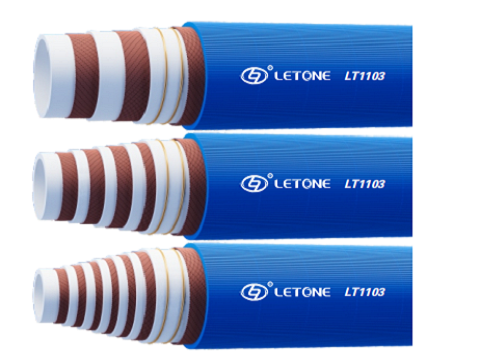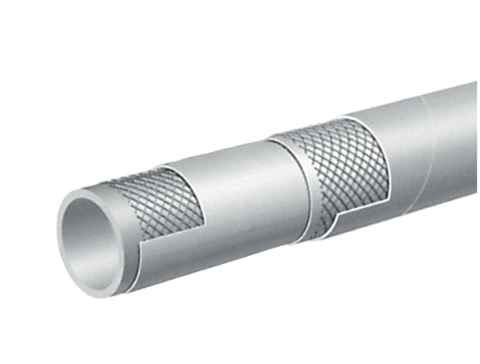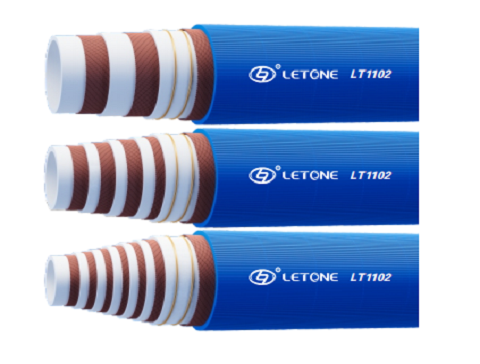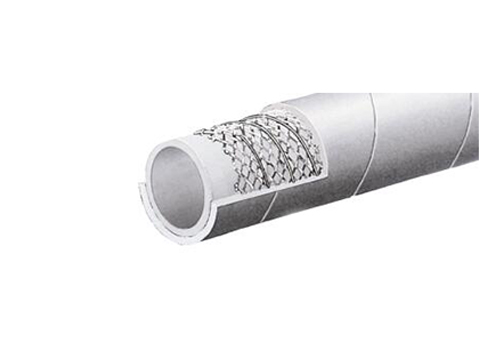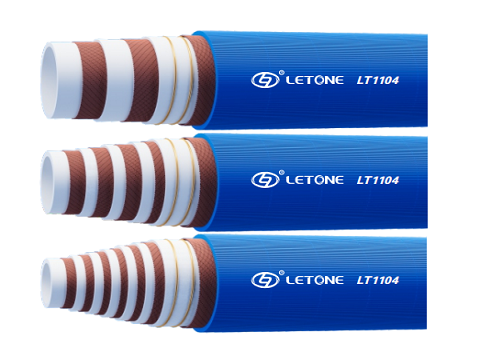It is important to understand the specifications and characteristics of fiber woven hoses in order to select the appropriate hose according to your needs. Hoses should not only be wear-resistant and corrosion-resistant, but also be able to withstand different temperatures and working pressures.
Hoses made of woven fabric or steel wire are more flexible than spiral hoses. This is because the wires/textile fibers in this layer are parallel to each other and do not cross each other.
How to extend the service life of fiber woven hoses
It is important to choose the appropriate hose for the hydraulic system to extend its service life. Thermoplastic hoses can easily cope with high temperatures and environmental pressures that can damage rubber products and lead to premature hose failure, safety risks and costly downtime. Compared to rubber hoses, these hoses also have many additional advantages, including higher wear resistance, consistent length, and fewer leakage points.
The reinforcement layer provides muscles for the hydraulic hose and determines its working pressure. It can be made of fiber, stainless steel, or other materials. The type of reinforcing material directly affects the final performance of the hose.
There are two common styles of hydraulic hose reinforcement: weaving and spiral winding. A woven hose is composed of multiple layers of twisted metal wires or textile fibers. The metal wires or textile fibers in a layer are arranged at specific angles to form a stronger hose that can withstand specific working pressures. Braided hoses are also more flexible than spiral wound hoses, with a smaller minimum bending radius.
The spiral wound hose is composed of a series of single wire spiral coils, which can increase strength and prevent the hose from collapsing under vacuum pressure. The rated pressure of the spiral winding layer is lower than that of the braided hose, and it has better impact load resistance than ordinary braided hose, because the various spirals do not overlap and do not start to wear through mutual friction.
Reasons for the fracture of the steel wire layer inside the fiber woven hose
When the fluid system experiences sudden pressure peaks, the hose is more likely to rupture at the bend. This can cause dangerous liquids to quickly spray out, causing damage to equipment and personnel. Choosing the appropriate hose for the application is crucial to prevent this situation. Woven hoses are very suitable for applications with medium to low strength and low pressure strength, while spiral hoses are most suitable for high pressure and frequent pressure fluctuations.
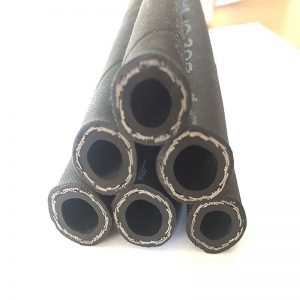
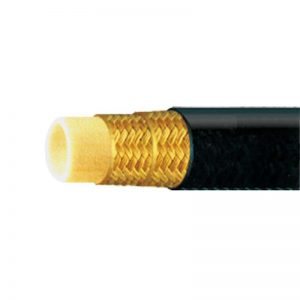 Steel wire reinforcement gives the hose great tensile strength, but not significant bending or compression strength. It is also highly corrosive. To solve this problem, the inner tube of the hose is coated with anti-corrosion material. Coating can significantly extend the service life of hoses.
The optical microscope of the ruptured hose showed that the first and second reinforcement layers were chemically degraded into ammonium salts of terephthalic acid (ammonolysis). The optical fracture diagram also indicates that the fracture began on the inner surface of the inner tube. Then it propagates to the outer surface and propagates longitudinally along the hose. There are no foreign particles or abnormal features at the fracture, and the fracture characteristics confirm this. The figure shows a higher magnification view of the fracture surface. 4a-d. The fracture surface closest to the starting point of the fracture has mist like cracks and branch cracks entering the inner tube.
The main raw materials used for fiber woven hose
The selection of raw materials is crucial for the performance of any hose. The reinforcement of the hose is its "muscle". Braided wire has different wire thicknesses and pitch angles, which can affect flexibility, strength (pressure level), and temperature performance. The combination of the correct weaving layer with the correct core and outer materials can ensure that the hose's performance in critical fluid systems reaches the highest standards.
The cost and quality of hoses will also be affected by the raw materials used. For example, the price of stainless steel woven fabric is usually higher than that of nylon or polyester. They will last longer and provide better value over time. The key is to find a supplier who is willing to collaborate with you on hose design.
The correct raw materials can help ensure that your industrial rubber hoses are manufactured according to your specifications and can be immediately applied. This can prevent costly production delays and help you fully utilize hoses. For example, higher quality reinforcement can enable your hose to be used in high-pressure applications, where the minimum bending radius is a major issue. Compared to spiral hoses with the same rated pressure, hoses with stainless steel reinforcement have a smaller minimum bending radius.
Steel wire reinforcement gives the hose great tensile strength, but not significant bending or compression strength. It is also highly corrosive. To solve this problem, the inner tube of the hose is coated with anti-corrosion material. Coating can significantly extend the service life of hoses.
The optical microscope of the ruptured hose showed that the first and second reinforcement layers were chemically degraded into ammonium salts of terephthalic acid (ammonolysis). The optical fracture diagram also indicates that the fracture began on the inner surface of the inner tube. Then it propagates to the outer surface and propagates longitudinally along the hose. There are no foreign particles or abnormal features at the fracture, and the fracture characteristics confirm this. The figure shows a higher magnification view of the fracture surface. 4a-d. The fracture surface closest to the starting point of the fracture has mist like cracks and branch cracks entering the inner tube.
The main raw materials used for fiber woven hose
The selection of raw materials is crucial for the performance of any hose. The reinforcement of the hose is its "muscle". Braided wire has different wire thicknesses and pitch angles, which can affect flexibility, strength (pressure level), and temperature performance. The combination of the correct weaving layer with the correct core and outer materials can ensure that the hose's performance in critical fluid systems reaches the highest standards.
The cost and quality of hoses will also be affected by the raw materials used. For example, the price of stainless steel woven fabric is usually higher than that of nylon or polyester. They will last longer and provide better value over time. The key is to find a supplier who is willing to collaborate with you on hose design.
The correct raw materials can help ensure that your industrial rubber hoses are manufactured according to your specifications and can be immediately applied. This can prevent costly production delays and help you fully utilize hoses. For example, higher quality reinforcement can enable your hose to be used in high-pressure applications, where the minimum bending radius is a major issue. Compared to spiral hoses with the same rated pressure, hoses with stainless steel reinforcement have a smaller minimum bending radius.

